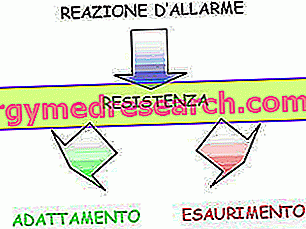By Dr. Stefano Casali
Muscle injuries are very common in sports and their incidence varies between 10 and 55% of all sports injuries (Jarvinen, 1997). Muscle injuries can be determined by a more frequent Direct Trauma in contact sports (basketball, soccer, rugby) or by a more frequent Indirect Trauma in individual sports (tennis, athletics).

The most affected muscles are the brachial biceps and the ischiocruralis.
Such injuries can be distinguished as:
elongation
distraction
stretching and tearing
Currently it is preferred to classify them based on the anatomical-pathological levels of gravity :
First degree injury : rupture of few muscle fibers
Grade II injury : breakage of a fair amount of muscle fibers
Degree injury : almost total or total interruption of the muscle belly
In both direct and indirect trauma injuries, several intrinsic and extrinsic predisposing factors are described.
Intrinsic factors:
lack of training
muscle fatigue
imbalance between agonist and antagonist muscles
age
Extrinsic factors:
climatic situations (cold)
environmental situations (unsuitable playing field)
In both direct and indirect trauma injuries , as the muscle tissue is highly vascularized, a hematoma is formed which can be of two types:
Intramuscular : the hematoma is bounded by an intact muscle band and is clinically manifested by pain and functional impotence.
Intermuscular : the hematoma expands in the interfascial and interstitial spaces if the muscular fascia is torn and in this case there is no increase in pressure inside the muscle.
The American Medical Association (Craig, 1973) divides muscle injuries into three levels of severity:
First degree injury : stretching of the tendon muscle unit which causes the breakage of some muscle and tendon fibers;
Second degree injury : more severe than the previous one, but without complete interruption of the tendon muscle unit;
Third degree injury : complete rupture of the muscle-tendon unit.
Reid (1992) classifies indirect muscle injuries into:
Exercise injuries
Muscular tear of which recognizes 3 degrees
Contusion can be mild, moderate and severe
Muller - Wohlfahrt (1992) distinguish lesions according to the structural unit concerned:
Muscle stretching that never presents fiber breaks
Tearing of muscle fiber
Tearing of the muscle bundle
Muscle tear
He then distinguishes Indirect Traumas in various levels of gravity
Contracture : diffuse alteration of muscle tone that causes pain away from sporting activity and is localized with difficulty
Stretching : functional alteration of the myofibrils, acute, occurs during sports with hypertonic and well localized pain
Tearing: tearing of a variable number of muscle fibers accompanied by acute and violent pain during a sporting activity. Depending on the amount of torn muscle three degrees are distinguished:
1) Strapp or first degree : few myofibrils torn inside a muscular bundle;
2) Second degree tear: laceration of several muscle bundles which affects less than 3/4 of the anatomical section surface of the muscle of that point;
3) Third degree tear: muscular rupture that affects more than 3/4 of the anatomic section surface of the muscle at that point and can be further divided into partial or total.
AJ Ryan (1990) proposed a classification of quadriceps muscle lesions that can be used as a sub-classification for all muscle injuries:
I Degree of tearing of few fibers with intact band;
II Degree of laceration of a fair number of fibers with intact fascia and presence of a localized hematoma;
III Degree of laceration of many fibers with partial lesion of the fascia and presence of ecchymoses;
IV Degree of complete rupture of muscle and fascia.
Despite the incomplete knowledge of pain from the physiopathological and clinical point of view, and despite the influence of many individual factors that interfere with it, the "pain" symptom nevertheless remains a key element, sometimes the only one, in highlighting a pathology in the subject who practices sports.
Musculoskeletal pain generally dominates the athlete, hence a deep somatic pain that originates in the myofascial, tendinous, capsular, ligamentous, osteoperiosteal and articular structures. In particular, due to the need to assess the timing and methods of competitive recovery, and the best therapeutic strategy, diagnostic differentiation must be timely with respect to the operating pathogenetic mechanism and the anatomical / functional structure concerned. It should be emphasized that in the assessment of painful manifestations in the sports subject it is essential to bear in mind that both the pain threshold and the pain tolerance threshold are higher, and that the pain sensitivity range (pain sensitivity range - with which the difference between pain threshold and pain tolerance threshold) of those who practice physical activity and is not significantly wider than in normal subjects.
Bibliography:



